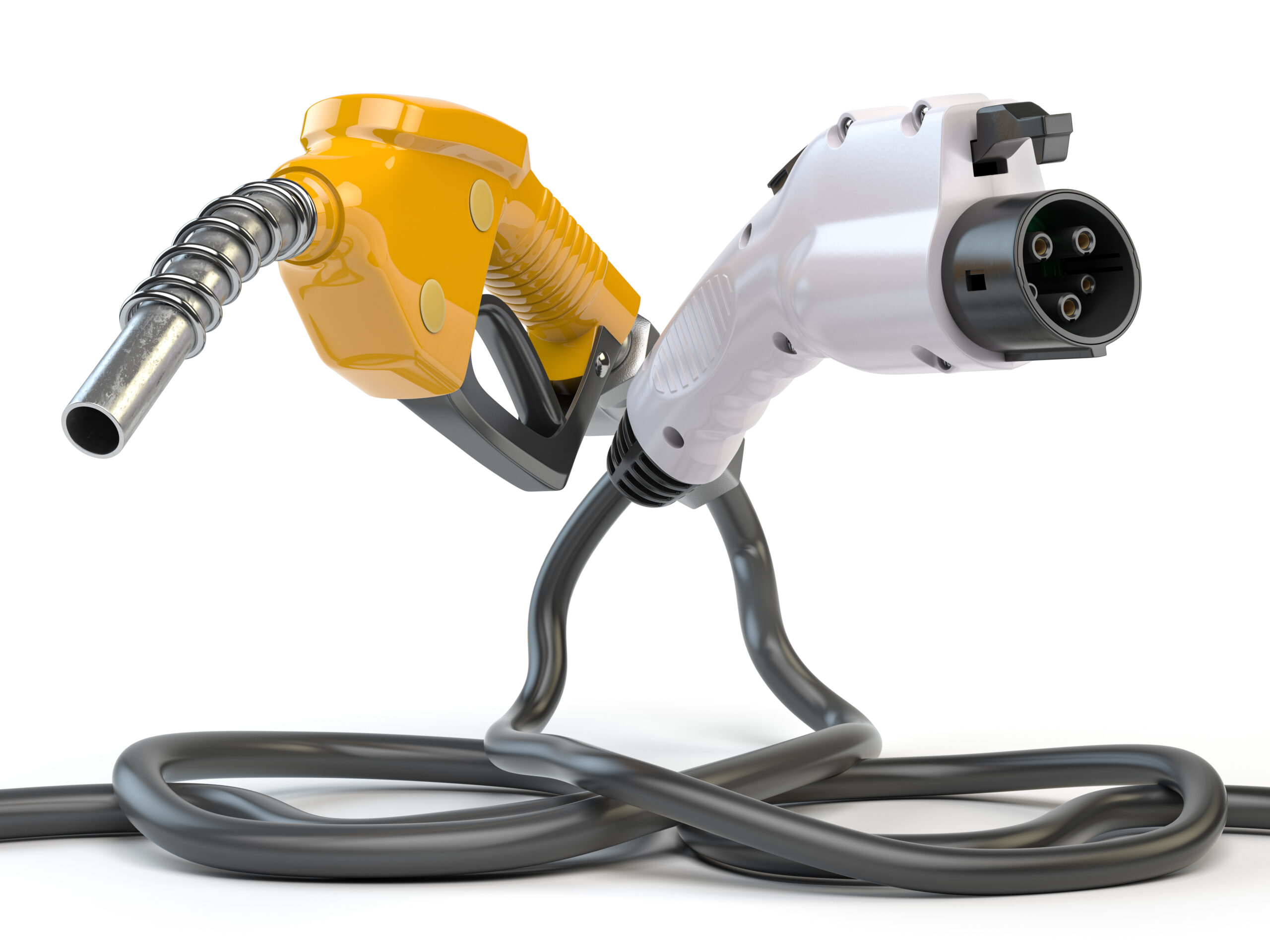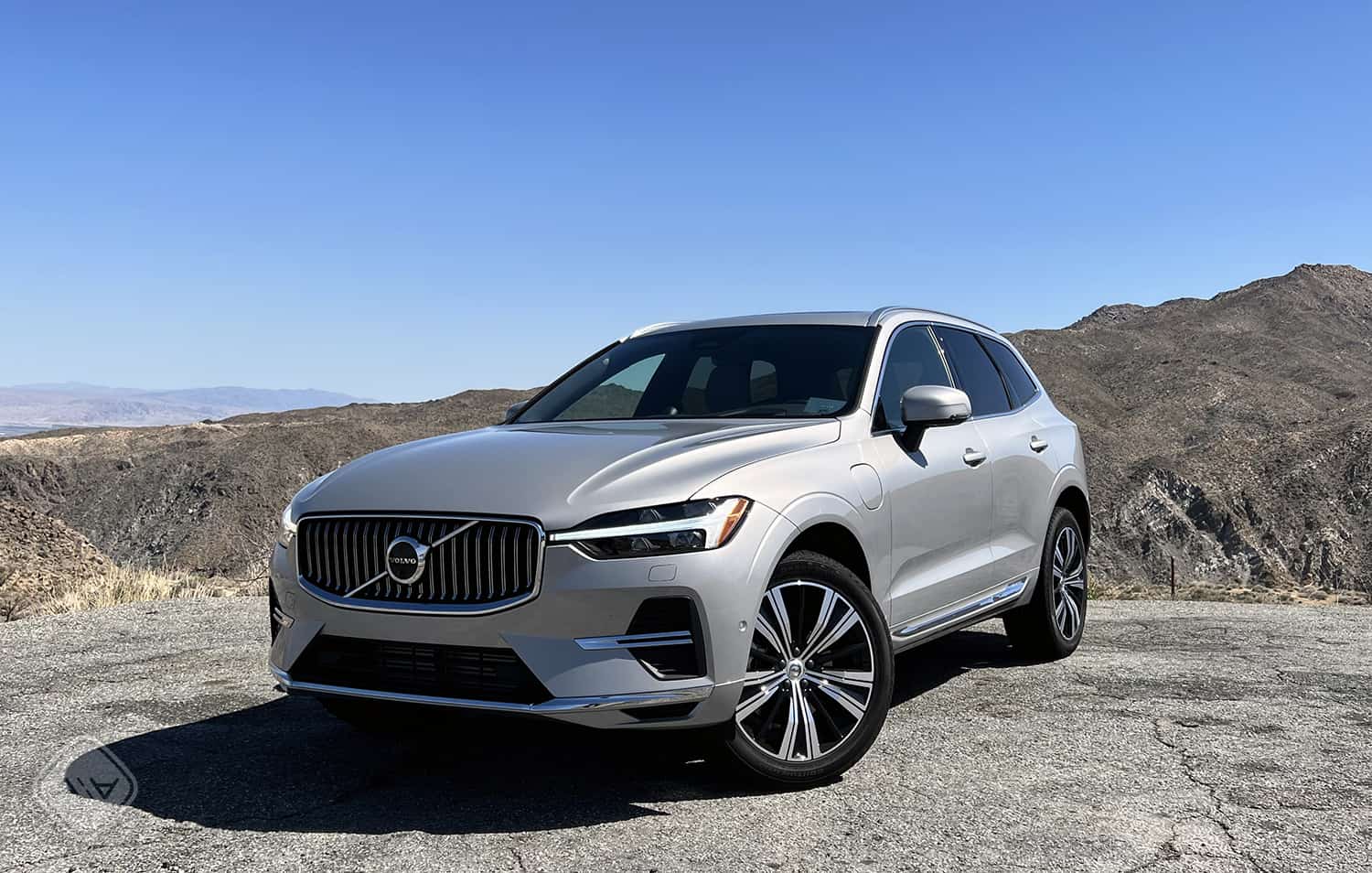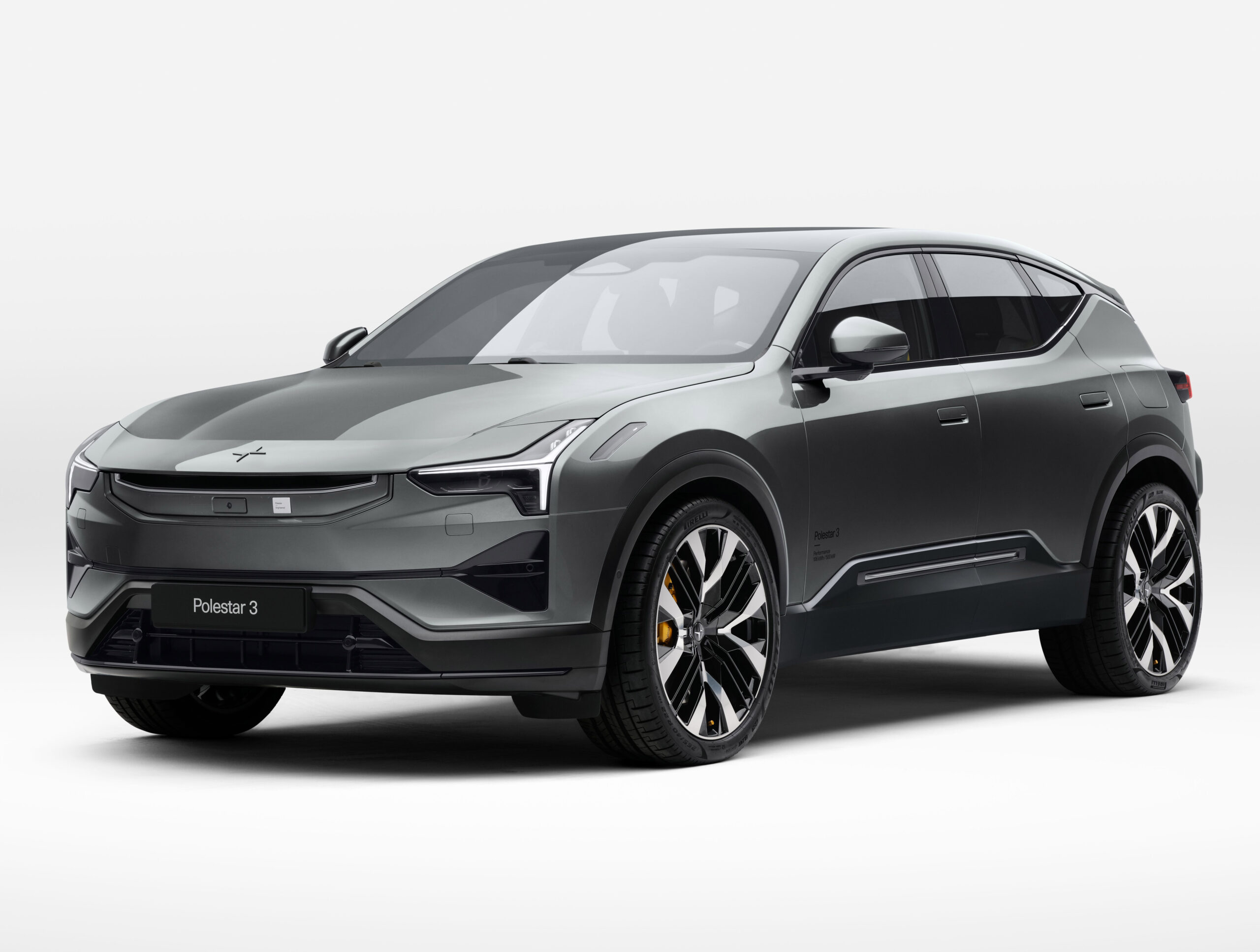

The 2022 Volvo XC60 Recharge. Outside of EV startups like Tesla and Lucid, Volvo has arguably been moving towards a zero emissions future more rapidly than any other luxury car company. Yes, even though they have just one EV on sale currently with a second one on sale later this month. How can that be? It’s all about Volvo’s pragmatic march towards electrification which prominently features plug in hybrids as a mid-step to reduce gasoline consumption. Think of it as a zero emissions future with a reduced-emissions present.
Volvo is so dedicated to PHEVs that their “T8” system has had continual updates since it was launched in the 2016 XC90. In the 6 years this system has been on sale Volvo has upgraded the battery three times and for “late 2022” they have almost completely redesigned the system from the battery to the engine. Making things a touch confusing, Volvo decided not to increment the model year (they don’t even call it a 2022.5). That means for one year only, you have the possibility of finding a 2022 XC60 Recharge on the dealer lot with 19 miles of EV range and 400 horsepower, or one with 35 miles of range and 455 ponies. Trust me, you want the newer one and here’s why.
From the outside, Volvo’s refreshed lineup looks similar to the outgoing model and that’s mainly due to the way that Volvo handles changes. Rather than bottle up bumper tweaks, interior swaps, and tech upgrades like the Germans do, Volvo prefers to release those changes as they complete them. The result is a product that changes every year rather the more typical “refresh” after the vehicle has been on sale for 3-4 years.
Volvo’s process makes their cars seem to age more gracefully, at least to me that is. The most recent and noticeable exterior change on the outside is the removal of visible exhaust tips from the rear. Volvo says this was done to harmonize the look with upcoming full electric vehicles, but I have to admit missing them. The rest of the sleek design aesthetic first launched on the 2016 XC90 is still here and it still looks great. The long hood proportion gives the XC60 a presence not matched by the Lexus NX or Acura RDX, although the longer front overhang vs a GLC is a clear sign that the engine sits sideways up front.

Part of Volvo’s transition to a more sustainable future is reducing the use of virgin plastics and leather. In the XC60 and a few other models, you can select a light grey wool-blend upholstery that certainly gives the interior a unique vibe. This is not Sweden’s first foray into wool seats, but it is Volvo’s first stab. The Saab 9000 was available for a hot minute with 100% wool upholstery, but this is different. Saab’s 1990s fabrics weren’t stain repellent or UV stable, which is why Volvo’s fabric is 30% wool and 70% polyester. The result is a more durable upholstery, and one with greater stain resistance and wear properties. Don’t want it? Don’t worry, there’s still plenty of cow on offer. For now.

An issue for some shoppers is likely to be Volvo’s Android based infotainment software. Despite being around since 2019, the software still lacks CarPlay and Android Auto, features found on the majority of the competition. Volvo’s software development on this new platform has been particularly sluggish with Sirius XM support only recently being offered. Although the platform has a great deal of promise, and it has native Google maps and music streaming capability, it honestly seems a semi-step back compared to the previous generation of Volvo’s software. On the positive side, the software’s voice recognition features work extremely well and when used in one of Volvo’s new full EVs, it will plan charging stops when using the onboard Google navigation.

Well, that depends on which Volvo you’re in. In a full EV, like the new Volvo C40 Recharge, it means it has a motor on the front axle, and another on the rear. In Volvo’s plug in hybrid line of vehicles, it means engine up front and motor in the back.
Speaking of the engine, Volvo decided it was time to replace their 2.0L four-cylinder that used both a turbocharger and a belt-driven supercharger. In its place is a turbo-only 2.0L four-cylinder that sees its power drop slightly down to 312 horsepower and 295 lb-ft. Coupled to the engine is a 14 HP motor generator unit that has the primary responsibility for starting the 2.0L turbo and generating power for the PHEV system as required. Power to the front wheels then flows through an 8-speed automatic transaxle made by Aisin.

The bump from 400 to 455 total horsepower is mainly tanks to a new and more powerful motor on the rear axle, now rated at 143 horsepower and 228 lb-ft. Making the upgrade possible is a new battery pack, the fourth battery this system has used, with 14.9 kWh of usable capacity, up from 9.1. (Gross capacity goes from 11.6 kWh to 18.7.) As before, the battery is located in the center console between the driver and front passenger. It occupies the area normally used by the AWD prop shaft plus the enlarged console area pictured above. One of the few components carried over from the previous PHEV system (that I wish hadn’t been) is the 3.3 kW onboard charger. With the bigger battery pack, Level 2 can take a while…
Thanks to the new battery design, essentially all 143 horsepower can be sent to the rear axle in EV mode, or when “constant AWD” is requested. In this mode the system can split power 50:50 front:rear for improved traction when mild off-roading or in poor weather unless you are requesting over 286 horsepower from the system.

Like a bat out of hell. Thanks to the power bump, the XC60 is the fastest crossover the Volvo’s lineup that still has a gas tank. 0-60 took just 4.4-4.5 seconds depending on the test run. The electric motor advantage is clear as it can deliver a large amount of torque and power instantly to the rear axle while the turbocharged engine builds boost. Around 10 MPH the entire system is singing in harmony and transmission shifts are less noticeable than in the last PHEV system because the motor is still cranking out 143 horsepower as there’s a moment’s pause from the gas drivetrain during shifts.
Although the battery gained weight due to the added cells, Volvo found other ways to keep curb weight in check and at 4,698 lbs this is the same weight as the outgoing model. The loss of the supercharger and tweaks to the motor and motor control hardware compensate entirely for the added battery weight.

Thanks to the double wishbone suspension, and 255 width tires, the XC60 handles well, but not as well as the German competition. This is due as much to the weight of the Recharge as to the power balance the system provides. With 295 HP on the front axle and no mechanical AWD system to help balance things out, the XC60 is still prone to mild torque steer. Unusually for most vehicles that torque steer however, cranking the wheel and flooring it in a parking lot results in torque steer and oversteer simultaneously which is rare and shockingly amusing.
The available adaptive air suspension provides a smooth ride but is tuned firmer than the adaptive suspensions in the American luxury competition. The system adapts for height and damping, but for 2022 Volvo has decided to change the way drive modes function. Gone is the drive mode knob in favor of options in the infotainment system and generally Volvo offers fewer drivetrain and suspension customizations vs the Germans.

Thanks to the battery bump, range goes from 19 miles to 35 miles in the 2022 XC60 Recharge and 2022 XC90 Recharge. In the S60 and V60 you’ll get 41 miles out of the same battery and the S90 splits the difference at 38 miles. If you’re lucky enough to live somewhere a PHEV version of the V90 is sold you’ll get the same range as the sedan. Thanks to the PHEV system, total range is 560 miles. With my daily commute of 26 miles each way, a tank of gas would likely last me over 1,200 miles just charging at the office during the day.
The base XC60 Recharge is now $54,750 plus a $1,095 destination charge. That’s just $500 more than the outgoing model, which for a moment might exist on the dealer lot right next to the new one. Confused? You should be, the one quirk with the way Volvo has done this refresh is that there are two 2022 model year Recharge models, one with the 11.6 kWh battery and one with the 18.7 kWh battery. Why didn’t they call it a 2022.5? Who knows. On the window sticker you’ll see “Extended Range” just for this model year to help differentiate them.
Thanks for the bigger battery, this plug-in hybrid now qualifies for the full $7500 federal tax credit. As long as you qualify for the full credit, the new longer range model could be around $2000 less than the outgoing model. Not a bad deal if you ask me. The model I spent most of my day in was a nearly fully-loaded Inscription trim with an approximately $73,000 price tag.

Value continues to be a strong reason to select the Volvo over the competition. The base price of the new XC60 RPHEV undercuts the Lexus NX 450h+ ($56,745) significantly, and you should know that likely later this year the tax credit on the Lexus will begin to sunset. Due to the way tax credits are allotted, Toyota and Lexus pull from the same pool and they are likely to hit the 200,000 credit cap before summer is out. Volvo on the other hand will likely have the credit for several years to come. Depending on when you plan to buy, this could mean a price delta of $2000 widening to $9500 overtime. Ouch. Not to mention the Volvo will give you significantly better performance with just 1 mile less range. The more significant downside for some however is likely going to be the improved fuel economy when operating in hybrid mode on the Lexus and, it almost goes without saying, Lexus long term reliability. Bearing in mind that most vehicles in this segment are least however…
For the moment BMW and Mercedes are not offering the X3 and GLC in America with a plug, instead they seem to be focusing their remaining credits on their upcoming full EVs. Should be noted however that BMW is likely going to lose their tax credit soon after Lexus.

That leaves us with just one direct competitor from Germany, the Audi Q5 plug-in hybrid. If you’re looking for a PHEV in this segment with a mechanical all-wheel-drive system, this is your only option as the system in the Lexus and Volvo are both based around an e-axle in the rear.
Compared to the Volvo, the Audi plug in hybrid system is a bit more compromised in terms of practicality. The battery occupies area otherwise used for cargo, and you’ll get less range with the Audi rated for 23 miles and 26 mpg after the battery has been exhausted. Although I the Q5 handles a hair better when pushed, thanks to that AWD system, the Volvo is significantly more powerful without any real compromises in functionality. Due to the way Volkswagen and Audi are structured in the United States, Audi does not suffer from the same loss of tax credits in short order that Lexus does.
Last year approximately half of all Volvo’s sales volume in the state of California was a PHEV, and nationally the number was around 25%. As a percentage of sales, that puts Volvo well ahead of any other auto manufacturer in the PHEV game, and I think it’s easy to see why. Not only is the Volvo plug-in hybrid system well executed, but by focusing on a combination of efficiency, practical packaging, and performance, they have made the plug and drive train the desirable and no-compromise option. If you were looking for one of the best luxury crossovers with a plug, the Volvo should be at the top of your list, just don’t hold your breath for CarPlay…




